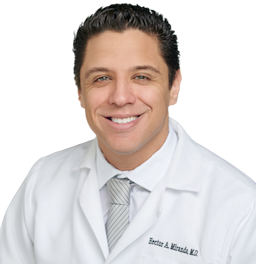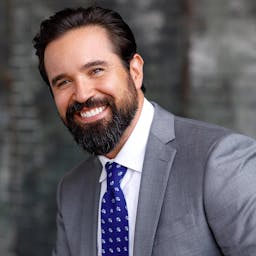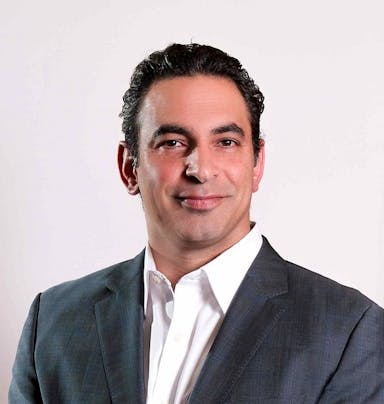Mastering Storytelling in Personal Injury and Civil Rights Cases
At their essence every trial is about the story. Each side has their own story that they are trying to persuade the jury to accept. If you convince the jury that your story is the correct one – you prevail. In order to do that you have to deconstruct the other party’s story but first and most importantly you must CONSTRUCT your own POSITIVE story of the case.
CONSTRUCTING V. DESCONSTRUCTION STORIES
- Decide what your case is about
- Decide what “really happened”
- I.e. you must tell a story that is easy to follow, makes sense and allows you to prevail/prove up your claims
- You must know your case file, know your claims and know how to tell your story
- Case Example:
- In Civil Rights Cases – we are often litigating excessive force cases where we have to tell a story to show that the police hurt someone unreasonably which requires debunking the officers’ story of why they were in danger and used force to defend themselves
- In Personal Injury Cases- we are often litigating a case around how our client has been injured due to the reckless conduct of others.We also have to debunk the Defense contention that our client “got what they deserved” or “not as injured as they claim / it’s a money grab”
WHAT ARE YOUR CLAIMS?
- In order to determine your claims you do not just look at your Complaint for your causes of action but you look at your JURY INSTRUCTIONS & your VERDICT FORM to figure out what you have to PROVE in your STORY
- Often those jury instructions will have factors, or prongs you have to meet
- Then those jury instructions are condensed down into your verdict form
- Case Example: In Civil Rights Cases – we are often litigating excessive force cases where we have to tell a story to show that the police hurt someone unreasonably which requires debunking the officers’ story of why they were in danger and used force to defend themselves
- Case Example: In Personal Injury Cases – We often have to grapple with duties and the breach of that duty, foreseeability and damages
WHAT IS YOUR STORY
- So when you tell your story (i.e. what happened in few paragraphs “elevator speech”) it should be easy for the jury to understand story, read that verdict form and find for you.
- What is your case about?
- Mondragon v. City of Fremont: A group of highly trained covert officers had tracked two violent criminals with the help of GPS on the car to a large apartment complex pool and learned that they were with two young teenage girls. The officer’s training and department policies dictated that they should not rush into take these suspects into custody because it would likely result in harm to the girls and the public – but to wait until an opportune time. Instead, they rushed into parking complex, even while their fellow officer called off the operation in fear for the two girls, the two suspects sped past the two officer cars who were to trying to make the stop and officers blindly fired several rounds into the side and back of the car killing a young innocent sixteen years old girl – when there was no urgency or even danger.
- This story must be simple and straightforward and meets the claims. Officers are only allowed to use their guns when they are faced with the threat of immediate serious bodily harm at the time they fire their weapons.
- In this story, the danger to the officers had passed because they fired weapons when the car was already passing them and into the back of it.
- This story must be simple and straightforward and meets the claims. Officers are only allowed to use their guns when they are faced with the threat of immediate serious bodily harm at the time they fire their weapons.
WHAT IS THEIR STORY?
- You also have to look at the other side’s story. They are going to tell a story that reflects their defense and you have to hope that it is a complex – as complex stories are easier to pick apart. If it is a simple one you have to find your “tie breakers” and “liars” – this is called deconstructing their story. It requires you to know your casefile, all of Defendants witnesses and all of the evidence.
- Essentially in a trial you will be casting doubt on Defendant’s story by pointing out credibility issues of their witness, how the evidence does not match their story AND AT THE SAME TIME explaining how the simplest answer to what “Really happened” is YOUR story because it makes sense, it’s simple and it matches the evidence
- REMEMBER Physical Evidence has no memory, does not lie and does not pick sides
TRIALS ARE MOVIES: FINDING YOUR ACTORS AND THEIR SCRIPTS
- Telling a story in trial is a lot like making a movie. In order to tell your story to the jury you are going to need “ACTORS” with “LINES” and PROPS”
- The actors are your witnesses, their lines are their testimony and the props are the evidence you’ll need to build your story.
- Once you’ve decided on your story you need to go through your case file and figure out what evidence you’ll need to tell your story
- This means figuring out what the witnesses testimony or “lines or script” are, what evidence “props” you will need to dramatize the “lines and scripts” and in what order the story should be told
- ALL OF THIS MATTERS – think about disjointed movies that are hard to follow v. simple story lines that are easy to follow
- You are dealing with 7-12 jurors who would rather be doing something else you NEED TO MAKE IT EASY for them to FIND FOR YOU
ONCE YOU’VE BUILT YOUR CAST, GOT THEM THEIR LINES AND THEIR PROPS – BUILD YOUR CLOSING
- At closing you want to remind your jury that the simplest story that matches the evidence is the one that makes sense.
- You want to point out why Defendants story is complex, forces a jury to make illogical conclusions or flies in the face of common sense or is too hard to follow because the lies are hard to follow
- Then you want to STATE YOUR STORY via the VERDICT FORM
TLU Live HB Agenda
Track 1
Breakfast
Hosted by
- 9:00a




 Will Sykes · Dorothy Clay Sims · Sach OliverDepositions
Will Sykes · Dorothy Clay Sims · Sach OliverDepositions Coffee & Snacks
Hosted by
- 10:15a




 Will Sykes · Dorothy Clay Sims · Sach OliverDepositions
Will Sykes · Dorothy Clay Sims · Sach OliverDepositions Coffee & Snacks
Hosted by
- 11:30a




 Will Sykes · Dorothy Clay Sims · Sach OliverDepositions
Will Sykes · Dorothy Clay Sims · Sach OliverDepositions Lunch
Sponsored by
- 2:00p


 Christian Augustin · Sean Claggett Intake and Pre-Lit Workup
Christian Augustin · Sean Claggett Intake and Pre-Lit Workup Coffee & Snacks
Hosted by
- 3:15p





 Shannon Wise · Jennifer Morales · Brian BlankenshipManaging the Case and Putting Constant Pressure on the Defense
Shannon Wise · Jennifer Morales · Brian BlankenshipManaging the Case and Putting Constant Pressure on the Defense Coffee & Snacks
Hosted by
- 4:30p





 Shannon Wise · Jennifer Morales · Brian BlankenshipManaging the Case and Putting Constant Pressure on the Defense
Shannon Wise · Jennifer Morales · Brian BlankenshipManaging the Case and Putting Constant Pressure on the Defense
Track 2
Breakfast
Hosted by
- 9:00a


 Joseph Fried · Dan Ambrose High Performance Presentations
Joseph Fried · Dan Ambrose High Performance Presentations Coffee & Snacks
Hosted by
- 10:15a


 Haytham Faraj · Ted Wacker Overcoming Significant Hurdles on the way to $21.2 Million Verdict
Haytham Faraj · Ted Wacker Overcoming Significant Hurdles on the way to $21.2 Million Verdict Coffee & Snacks
Hosted by
- 11:30a

 Joseph FriedJoe Fried’s Top Tips for Winning Trucking Case
Joseph FriedJoe Fried’s Top Tips for Winning Trucking Case Lunch
Sponsored by
- 2:00p

 Sagi ShakedMaximizing Your TBI case
Sagi ShakedMaximizing Your TBI case Coffee & Snacks
Hosted by
- 3:15p

 Kurt ZanerHow fun, persuasive writing can lead to eight figure verdicts and settlements
Kurt ZanerHow fun, persuasive writing can lead to eight figure verdicts and settlements Coffee & Snacks
Hosted by
- 4:30p


 Khail Parris · Alex Wheeler Picking a $58,000,000 jury: Using fat words and skinny words for cause
Khail Parris · Alex Wheeler Picking a $58,000,000 jury: Using fat words and skinny words for cause
Track 3
Breakfast
Hosted by
- 9:00a

 Christian MorrisCross-Examination of Defense Medical Expert
Christian MorrisCross-Examination of Defense Medical Expert Coffee & Snacks
Hosted by
- 10:15a


 Bruce Broillet · Molly McKibben The Erin Andrews Invasion of Privacy Case: How the $55 Million non-economic Verdict was won
Bruce Broillet · Molly McKibben The Erin Andrews Invasion of Privacy Case: How the $55 Million non-economic Verdict was won Coffee & Snacks
Hosted by
- 11:30a


 Bruce Broillet · Molly McKibben The Erin Andrews Invasion of Privacy Case: How the $55 Million non-economic Verdict was won
Bruce Broillet · Molly McKibben The Erin Andrews Invasion of Privacy Case: How the $55 Million non-economic Verdict was won Lunch
Sponsored by
- 2:00p


 Bruce Broillet · Molly McKibben The Erin Andrews Invasion of Privacy Case: How the $55 Million non-economic Verdict was won
Bruce Broillet · Molly McKibben The Erin Andrews Invasion of Privacy Case: How the $55 Million non-economic Verdict was won Coffee & Snacks
Hosted by
- 3:15p

 Przemek LubeckiThe Mental Game for Trial - Performing Under Pressure
Przemek LubeckiThe Mental Game for Trial - Performing Under Pressure Coffee & Snacks
Hosted by
- 4:30p

 Alicia CampbellHow to Get Your First 8 Figure Verdict
Alicia CampbellHow to Get Your First 8 Figure Verdict
Track 4
Breakfast
Hosted by
- 9:00a



 Phillip Miller · Justin Kahn · Edward CiarimboliDesigning Exhibits - Design Ideas and Techniques
Phillip Miller · Justin Kahn · Edward CiarimboliDesigning Exhibits - Design Ideas and Techniques Coffee & Snacks
Hosted by
- 10:15a



 Phillip Miller · Justin Kahn · Edward CiarimboliDesigning Exhibits - Design Ideas and Techniques
Phillip Miller · Justin Kahn · Edward CiarimboliDesigning Exhibits - Design Ideas and Techniques Coffee & Snacks
Hosted by
- 11:30a



 Phillip Miller · Justin Kahn · Edward CiarimboliDesigning Exhibits - Design Ideas and Techniques
Phillip Miller · Justin Kahn · Edward CiarimboliDesigning Exhibits - Design Ideas and Techniques Lunch
Sponsored by
- 2:00p





 Lloyd Bell · Monte Tynes · Bob ByrneTry your FRKN Case
Lloyd Bell · Monte Tynes · Bob ByrneTry your FRKN Case Coffee & Snacks
Hosted by
- 3:15p

 John RomanoNavigating The Minefields Of Valuing Cases
John RomanoNavigating The Minefields Of Valuing Cases Coffee & Snacks
Hosted by
- 4:30p

 Dirk VandeverDirk's Trial Manifesto
Dirk VandeverDirk's Trial Manifesto
Party Sponsor
5:30pm-8:30pm
Barbie Pink & White Party
Hosted by








































































































































